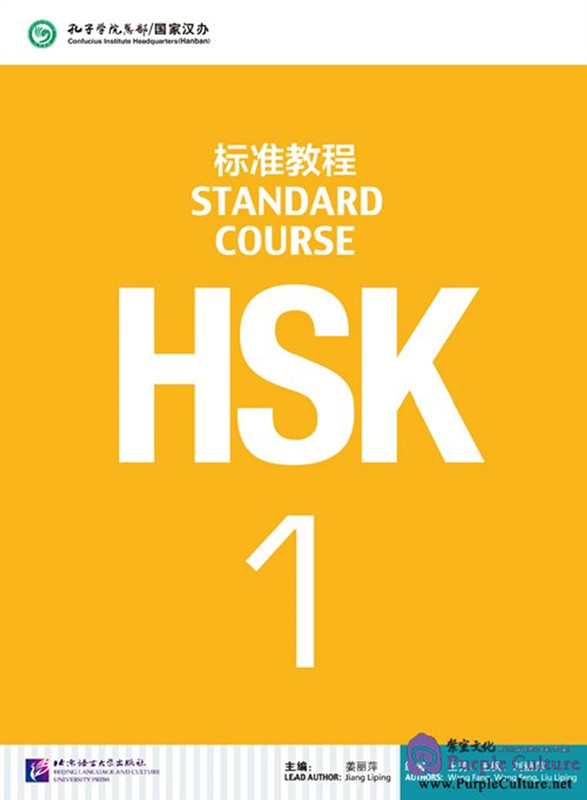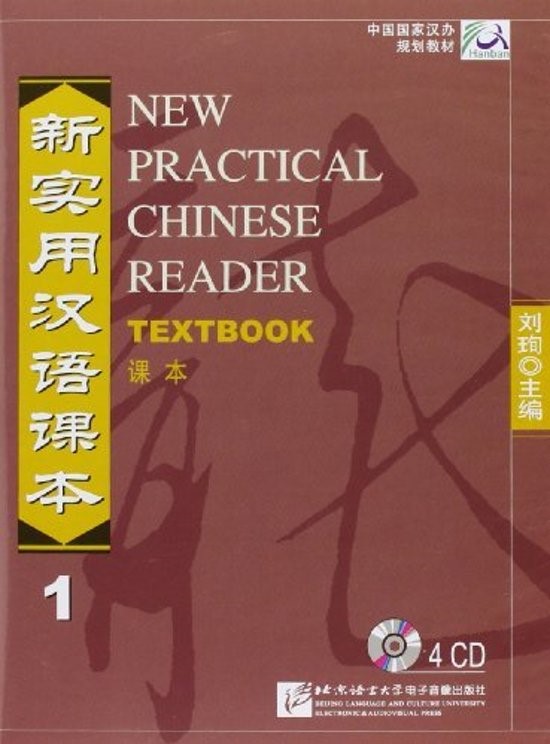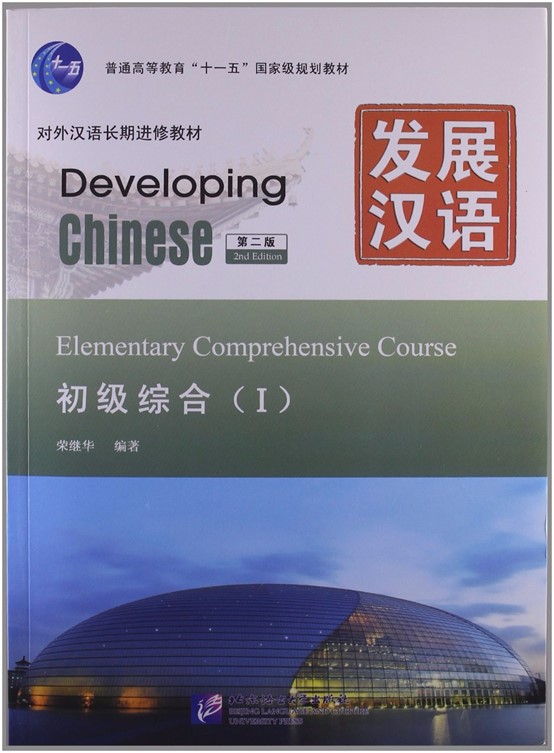What is HSK 1?
HSK (Hanyu Shuiping Kaoshi) is a Chinese Language Proficiency Test which is held regularly around the world by Hanban (Confucius Institute Headquarters). So far, there are six levels, and HSK level 1 is the beginning level, which is also the very first goal for many Chinese learners. HSK 1 requires students to learn 150 new words as well as the whole Pinyin pronunciation system, which will enable you to meet basic communication needs and give you the ability to further your Chinese language studies.
Why do I need an HSK 1 Book?
Different books target different goals. HSK is not an achievement test based on any one textbook: it’s a proficiency test assessing learners’ language abilities. Using an HSK 1 book can help you meet the test requirements in a very efficient way. The target words and phrases are scientifically organized and are frequently used in daily life. In this article, we will recommend some popular and established HSK 1 books for you to use.
HSK Standard Course 1
HSK Standard Course 1 is designed for total beginners who need to acquire basic Chinese language abilities as well as students who aim to take the level 1 test. It has summed up the test’s focuses, difficulties, language points, topics, functions, and situations. Even though the HSK level 1 test only involves listening and reading sections, the HSK Standard Course 1 book still provides listening, reading, speaking, and writing training. Apart from the textbook, there is also a supporting workbook of exercises which focuses on improving students’ listening, reading, and writing skills, so as to refine their language abilities. The book suggests it can be finished in 34 class hours and allow students pass HSK level 1 test.
There are 15 lessons in this book. The
first and second lessons mainly focus on pronunciation, which includes all
basic Pinyin concepts. These two lessons also create a very firm foundation for
further study. Afterwards, each lesson also provides corresponding drills to expand
and strengthen pronunciation skills.
From lesson 3 to 15, the texts are
theme-based with one or two example conversations. The structure of each lesson
is generally formed by warm-up, text, notes, practice, pronunciation,
characters and use sections. Some of the lessons also include a culture section
which helps learners know more about Chinese people and China. HSK Standard
Course 1 ensures the words and grammar points used are within the HSK 1
requirements. It emphasizes diversity and richness of content.
The characters used in this book take the
student all the way through the learning process from 17 basic strokes to
writing order, character structure, and basic radicals. There are 52 single-component
characters required at level 1.
All the target grammar points and words are well organized in each lesson. You know exactly what you are learning with strong purpose and motivation.
The layout of each lesson:
| Warm-up |
New words and phrases with illustrative pictures |
| Text | 3 situations with 1 or 2 conversations |
| Notes | Grammar points with example sentences |
| Practice | Q & APicture descriptionComplete sentences |
| Pinyin | Initials, finals, tones and difficult pronunciations (lesson 3-5)Syllable drills (lesson 6-15) |
| Chinese characters | Basic strokes (lesson 1-6)Basic radicals and single-component characters (lesson 7-15) |
| Application | Pair activitiesGroup activities |
| Culture | Cultural interactions in daily life |
Topics and functions in the Course 1 book:
| Leeson | Key | Function |
|---|---|---|
|
Lesson 1 |
Greetings 1 | Daily greetingsBasic initials, finals, tones, syllables |
|
Lesson 2 |
Greetings 2 | Daily greetingsCompound initials, finals, syllables, rules |
|
Lesson 3 |
Introduction 1 | Introductions (nationality, name, profession)Pronunciation differentiationTone sandhi of 不Spelling rules for ü |
|
Lesson 4 |
Introduction 2 | Introducing others (nationality, name, profession)Pronunciation differentiationTone sandhi of 一Spelling rules for y and w |
|
Lesson 5 |
Age | Age expressionsNumbersThe retroflex final 儿Finals with i,u,üPronunciation differentiation in pairs |
|
Lesson 6 |
Speaking Chinese | Expressions about being able to do something |
|
Lesson 7 |
Date | Expressions about dateTalking about plans |
|
Lesson 8 |
I want to…… | Talking about being willing to do somethingShopping (ask price)Money |
|
Lesson 9 |
Location | Talking about locations |
|
Lesson 10 |
Existence | Talking about placement and locationsTalking about existenceImperative sentences |
|
Lesson 11 |
Time | Expressions about time |
|
Lesson 12 |
Weather | Talking about the weatherTalking about healthAsking about the status of something or someone |
|
Lesson 13 |
Action in progress | Asking if someone is doing somethingTalking about someone’s likesPhone calls |
|
Lesson 14 |
Action completion | Talking about an occurrence or completion of something |
|
Lesson 15 |
Emphasizing something | Expressions emphasizing the time, place or mannerDate expressions |
New Practical Chinese Reader 1
As one of the most popular Chinese language textbooks, the New Practical Chinese Reader series has been tested by countless learners. The whole set consists of six volumes. Volumes 1 is at the basic level, which introduces Chinese customs and culture as well as relevant Chinese expressions and ideas within the setting of campus and daily life. It has 12 lessons including 2 preparatory lessons on phonetics. Each lesson needs about 4 or 5 class hours to complete. In addition to systematical phonetic lessons, there are also many drills on Pinyin and tones, as well as some daily expressions.
The main texts are dialogues about necessary topics and typical scenes for learners to use basic structures and functions of Chinese, such as daily greetings, introductions, shopping, and transportation, which strengthen all four language skills. It goes from heavy use of pinyin to gradually more use of Chinese characters. Choosing this Reader 1 as your HSK level 1 book is definitely enough.
The layout of each lesson:
| Warm-up | Probing questions, stimulating activity |
| Text | New words Notes |
| Language points | Key sentencesGrammar points |
| Practice and Application | Supplementary wordsPronunciation drillsConversation practiceListening and repeatingReading comprehensionTasks and activitiesWriting exercise |
| Chinese characters | Character compositionWriting rules |
| Culture | Cultural knowledge |
| Self-evaluation |
Topics and functions in the Volume 1:
|
Leeson |
Topic |
Function |
|---|---|---|
|
Pre-lesson 1 |
Phonetics |
|
|
Pre-lesson 2 |
Phonetics |
|
|
Lesson 1 |
Greetings |
|
|
Lesson 2 |
Introduction |
|
|
Lesson 3 |
Family |
|
|
Lesson 4 |
Study |
|
|
Lesson 5 |
Birthday |
|
|
Lesson 6 |
Directions |
|
|
Lesson 7 |
Shopping |
|
|
Lesson 8 |
Seeing a doctor |
|
|
Lesson 9 |
Seasons and transportation |
|
|
Lesson 10 |
Festivals |
|
Developing Chinese (Elementary)
There are three levels of Developing
Chinese: elementary, intermediate and advanced. Each level contains 5 aspects,
including comprehension, listening, speaking, reading, and writing. The
Comprehensive course is the main book.
There are two volumes for the elementary level. Volume one has 30 lessons in total, which is perfect for total beginners. After finishing this book, learners can master the whole Chinese phonetics system and pronunciation skills, as well as the fundamental words and sentence patterns. It also requires the mastery of basic strokes and structures of Chinese characters. With the knowledge from the elementary level, you can meet basic communication needs in daily life and have some cultural knowledge about China, which also satisfies the requirements of HSK level 1.
|
Lessons |
Phonetics |
Characters |
Layout of each lesson |
|---|---|---|---|
|
Lesson 1 |
|
|
Texts
Writing Chinese characters
|
|
Lesson 2 |
|||
|
Lesson 3 |
|||
|
Lesson 4 |
|
||
|
Lesson 5 |
|
||
|
Lesson 6 |
|||
|
Lesson 7 |
|||
|
Lesson 8 |
|||
|
Lesson 9 |
|
||
|
Lesson 10 – 30
|
|
My Chinese Classroom (Elementary 1)
There are 3 levels of the My Chinese
Classroom series, and each level has three volumes. After studying the
elementary level books, learners can master over 800 words and 80 grammar
points, which means they are able to pass HSK level 3. Each volume has 10
lessons with texts, new words, practice, listening, and characters sections. It
suggests 42 class hours per volume. Besides English, there is also a Japanese
translation provided in it.
The grammar part is quite different from other textbooks. There is no independent explanation of each grammar point, but rather a bulleted list about the grammar points at the very beginning of each lesson. With a teacher’s help, this book can become much easier for learners. Also, there are corresponding grammar drills in the exercises part.
The layout of Elementary 1:
|
Lesson |
Key |
Function |
Layout of each lesson |
|---|---|---|---|
|
Lesson 1 |
Basic Greetings |
|
|
|
Lesson 2 |
Nationality and introduction |
|
|
|
Lesson 3 |
Shopping |
|
|
|
Lesson 4 |
Plans 1 |
|
|
|
Lesson 5 |
Plans 2 |
|
|
|
Lesson 6 |
Locations |
|
|
|
Lesson 7 |
Dining |
|
|
|
Lesson 8 |
Reservation and ordering |
|
|
|
Lesson 9 |
Personal conditions |
|
|
|
Lesson 10 |
Status |
|
Other materials
Besides the standard textbooks, there are
also some supplementary materials to help you master the knowledge and pass the
HSK 1 test smoothly, and more importantly, further your Chinese language
learning with a firm foundation.
Words and phrases are the bricks for the construction of a language. Each HSK level requires a certain number of key words that need to be mastered. There are 150 words in the HSK level 1 vocabulary list. To become more familiar with these words, you can use this vocabulary list. You can download it here.
To pass the test, you might also need to
know the test structure well so that you can beat it easily. There are mainly
two parts in the HSK level 1 test: listening and reading. Therefore, it doesn’t
need to test your speaking and writing. The whole test will last for 40 minutes
total. Each part counts for 100 points. You just need to get over 120 points to
pass the test. There is also pinyin provided in the test to assist your
understanding.
Before taking the HSK 1 test, it’s better
to do some mock tests to get more familiar with it and to get to know your
current level so that it’s easier to make up for your shortcomings. There are
both paper-based and online mock tests. You can choose any one you want.
- Paper-based mock test: New HSK Mock Test Level 1 (Book + CD)
- Online mock tests: Online HSK Sample Tests
The post HSK 1: The Best Books to Begin Your Journey appeared first on .




